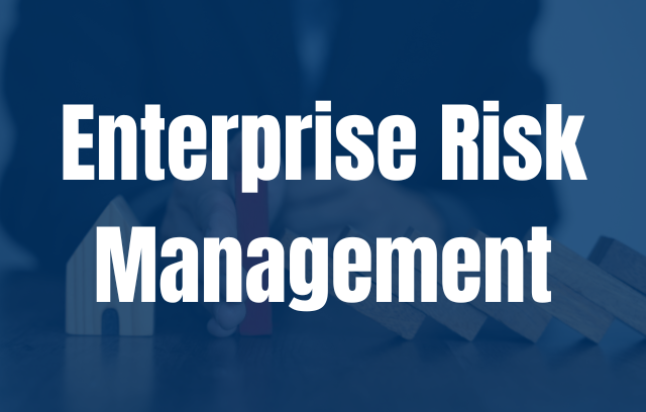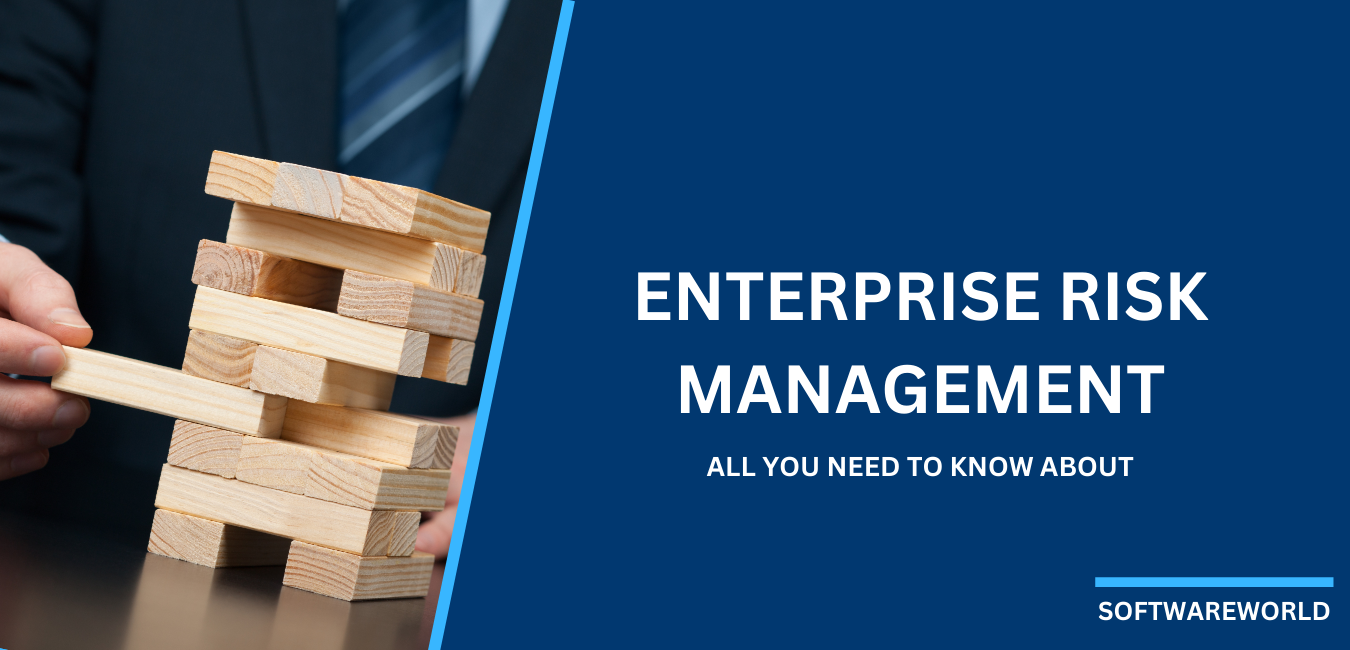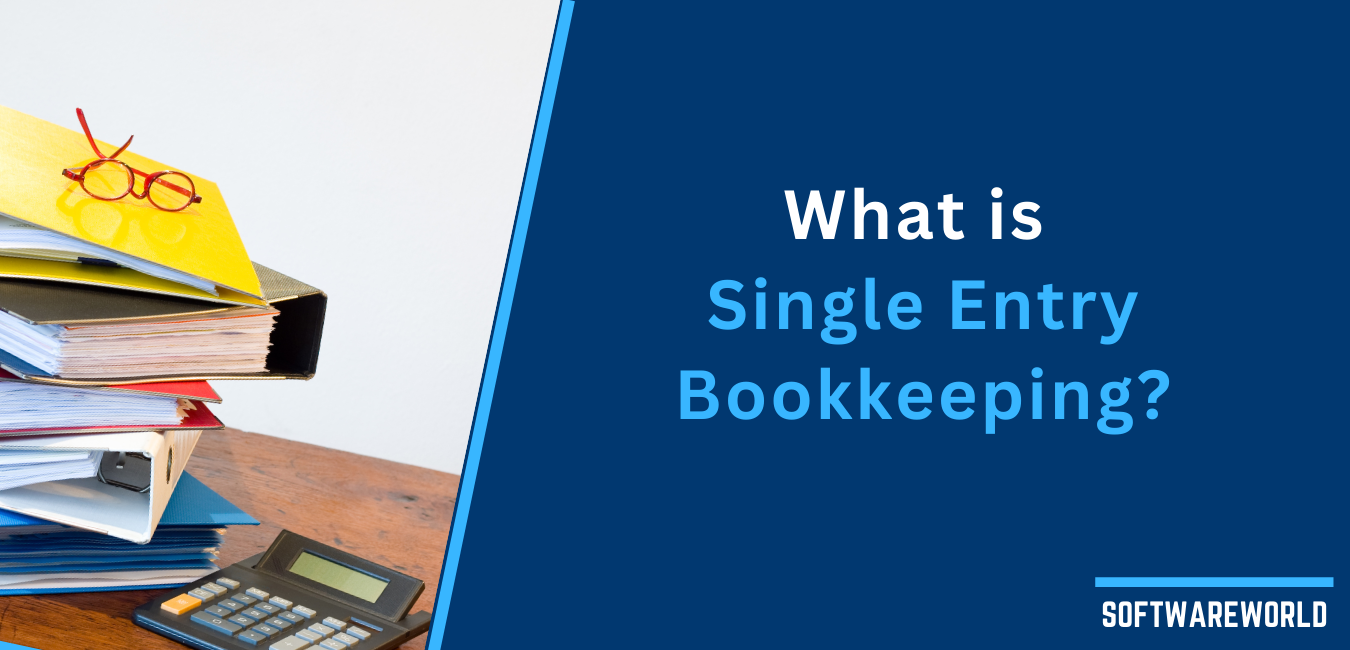Wondering what is Enterprise Risk Management (ERM)? Or how and why is it so important for businesses worldwide?
You are at the right spot.
In this article, we will discuss in detail the various concepts surrounding ERMs, including ERM meaning, its importance, features, pros and cons, types of risks you can manage using such systems, and much more.
So, let’s dive straight in!
Feel free to jump between sections and bookmark this article to come back to it later.
» Enterprise Risk Management (ERM) Meaning

Width: 646px, Height: 412px
Enterprise risk management or ERM is a method organizations use to recognize, evaluate, and prepare for possible risks. Risks, in this case, refer to any potential hazards, losses, and dangers that may hinder the normal flow of business operations and cause losses to the business.
ERM follows a holistic, strategic approach. It considers the entire organization, along with its diversified networks, as a single unit when it comes to risk identification and management.
Individual business units within a company having their own risk management processes don’t make sense, after all. It makes the entire process of risk analysis, understanding, management, and implementation time-consuming. Moreover, the process becomes delayed and cumbersome.
But with ERM, organizations have a plan of action handy in case a possible risk turns into reality. Such plans of action are typically revisited and modified from time to time and shared with concerned stakeholders for swift execution.
Organizations across industries, including finance, construction, aviation, energy, and healthcare, use ERM. It helps them minimize risks and maximize the scope of opportunities.
Companies that adopt ERM tend to have a dedicated ERM team. These firms also use robust enterprise
risk management software to streamline their operations.
Note then Enterprise Risk Management (ERM) is a top-down strategy. Meaning, the decisions are taken by the top-level management. Hence, it is imperative to have seamless communication and collaboration between different departments for ERM to be a success.
Width: 640px, Height: 408px
Width: 640px, Height: 408px
Width: 640px, Height: 408px
Width: 640px, Height: 408px
Width: 640px, Height: 408px
Width: 640px, Height: 408px
Width: 640px, Height: 408px
Width: 640px, Height: 408px
Width: 640px, Height: 408px
» Importance of Enterprise Risk Management
Every organization, irrespective of its industry or size, is prone to risks and failures. And while many businesses may choose not to formalize it, they do practice risk management at a degree feasible to them.
But without a proper risk management plan, the possibility of poor decisions and the losses & damages that come along increase manifold. The workforce is less prepared and struggles more when the risks actually take place. Because there is no formal process in place for managing such situations.
Add to that the deviation from your business goals. And the chaos is multiplied with complex operations, ultimately decreasing revenues, client satisfaction, and market value.
On the other hand, a formal ERM strategy helps you walk the talk. It puts in place the required to-dos, resources, and processes to deal with the unexpected more effectively. From supply chain challenges to financial uncertainties to security threats, ERM can help identify, foresee, and tackle a variety of issues.
Since the most modern ERM systems are data-driven, they offer advanced functions, for instance, automated
audit management and security tracking. That further simplifies management, saves costs, and boosts efficiency.
» Types of Risks to Manage through ERM
A company, regardless of its industry, size, or stature, has to face a variety of business risks right from the day it begins its operations. With Enterprise Risk Management, it becomes simpler to not only identify different kinds of potential threats but also come up with plans to avert and manage them.
Here are some potential risk types you can manage with ERM tools:
1) Operational risk
These types of threats hamper the everyday operations of an organization. For example, human errors, system failures, faulty internal processes, or external events like natural disasters.
2) Financial risk
As the name suggests, financial risks comprise threats that affect the financial position of a company in the market. Examples include equity risks, credit risks, foreign investment risks, and currency risks, among others.
3) Security risk
Security risks threaten the security of your company’s assets, be it physical assets or data threats. For example,
data breaches, virus attacks, insider threats, phishing, and ransomware.
4) Legal risk
Legal risks include legal, regulatory, or contractual threats. For instance, corporate risks, not meeting required quality standards, breach of contract, tax laws, and risk of disputes.
5) Compliance risk
Compliance risks are threats that occur due to a company’s failure to meet the standard industry practices or laws. Examples could be inefficient data regulations, using harmful chemicals that raise safety concerns, and hazardous waste disposal.
6) Strategic risk
Strategic risks can put your firm’s long-term plans at threat. Examples include changes in critical leadership roles, shifts in market and customer sentiment, new service/product launches, and mergers & acquisitions.
Width: 640px, Height: 408px
Width: 640px, Height: 408px
Width: 640px, Height: 408px
Width: 640px, Height: 408px
Width: 640px, Height: 408px
Width: 640px, Height: 408px
Width: 640px, Height: 408px
Width: 640px, Height: 408px
» Advantages of Enterprise Risk Management
Incorporating enterprise risk management can help your organization in more ways than one.
Some of the benefits include the following:
- Organizations become risk-focused in nature. Evaluation of risks becomes a norm, which, in turn, boosts risk management and mitigation.
- Organizations are better prepared to deal with uncertain situations.
- Organizations are able to fully utilize their pool of resources in a way that minimizes possible risks.
- It becomes simpler to generate effective reports, enhancing the top-level decision-making process.
- With ERM in place, employees tend to have a positive future image of the firm.
- Organizations experience better collaboration and communication across levels since the motto is to avert and mitigate threats to attain business goals.
» Disadvantages of Enterprise Risk Management
Like every other business practice, even ERM is not free from challenges. Let’s discover the common ERM disadvantages you must know before going for an ERM tool:
- Risk analysis, identification, and management may require a considerable time. That can increase the existing workload of your teams when starting out with ERM.
- It can be expensive to implement ERM initially as you may need specialized software systems.
- ERM is often perceived as reactive. It is difficult to forecast or recognize new possible future threats through ERM - threats a company has never faced before.
- It is tough to evaluate ERM mitigation expenses.
- Management inputs and estimates, on which ERM majorly depends, are not always accurate.
- It is difficult to quantify ERM success.
» Must-have ERM Features
Ready to get an ERM tool for your organization?
Here are some critical features that make up a robust ERM system:
Customization
The ERM tool you choose should offer a sufficient degree of customization to complement your entity’s internal processes, long-term objectives, as well as risk management policies.
Integration
A powerful ERM tool will offer seamless integrations with other leading systems or third-party apps that you already use at your organization to streamline the entire workflow. From hassle-free collaborations to data synchronization in real-time, it makes business operations smoother.
Analytics
The right ERM system incorporates solid analytic tools to provide you with insightful data, fueling more informed decision-making for the future. What’s more? Its built-in reporting functions generate in-depth reports, helping you spot vital trends, customer behavior, and changing market patterns just in time.
Costs
One of the most crucial components for selecting an ERM tool is its cost-effectiveness. The system must provide scalability and feasibility in terms of both functions and cost in the long term.
Compliance
Last but not least, a good ERM tool makes it easier to adhere to the industry norms and standard laws. The tool should offer hassle-free upgrades to remain compliant with the evolving regulations.
Now that we’ve explored the must-have ERM features, it’s time to go through the best practices to implement ERM the right way.
» ERM Implementation Best Practices
› Define the scope
Before you start the implementation of ERM, make sure that you have done a thorough analysis of your core business processes and identified the potential related risks. This would come down to analyzing the risk profile of your entire organization for a powerful strategy.
› Create a blueprint
Once you have the scope ready, determine the risks that could derail your business operations, objectives, and strategic management. Create a blueprint with actionable ideas to offset those threats.
› Develop a plan of action
The next step is to create a practical action plan that details the measures to be taken to protect your organization against the identified risks. It also includes steps to follow in case an unexpected event takes place to minimize the risks.
› Leverage technology
Utilize modern technologies, such as
Artificial Intelligence and Machine Learning, to minimize and avert possible threats. Such advanced tools can make it easier to track, summarize, and alert about risks through accurate data. Moreover, these tools can execute controls based on triggers to mitigate risks faster.
› Delegate responsibilities
The action plan you create must have clarity of responsibility. Ensure that you assign the right responsibilities to the right people to avert and minimize threats. Besides, keep an alternate plan ready to hand over specific tasks to specific people in scenarios when key leaders leave the firm.
› Monitor continually; use key metrics
Establish key metrics to assess the progress of your ERM practices. Ideally, you should have a dedicated ERM team to constantly monitor the predefined ERM process. Without the monitoring and metrics, it is impossible to know if the tasks are being performed right, the goals are met, and compliance is being followed.
› Incorporate flexibility
Every company is different. And so are its risks. Similarly, the challenges you face as a company today will be different a few months and years from now. Hence, it only makes sense to allow room for flexibility in your ERM practices and future strategies.
» Final Thoughts
Every organization is exposed to innumerable threats of all kinds right from day one. Without a proper plan, it is impossible to avert such risks. That’s why entities are resorting to ERM as it not only helps them recognize possible risks but also create a solid plan to mitigate them. The primary objective of ERM is to protect the company, along with its operations and assets, against potential damages. All while ensuring there is a plan ready in case an unfortunate event takes place.
 Width: 646px, Height: 412px
Width: 646px, Height: 412px



